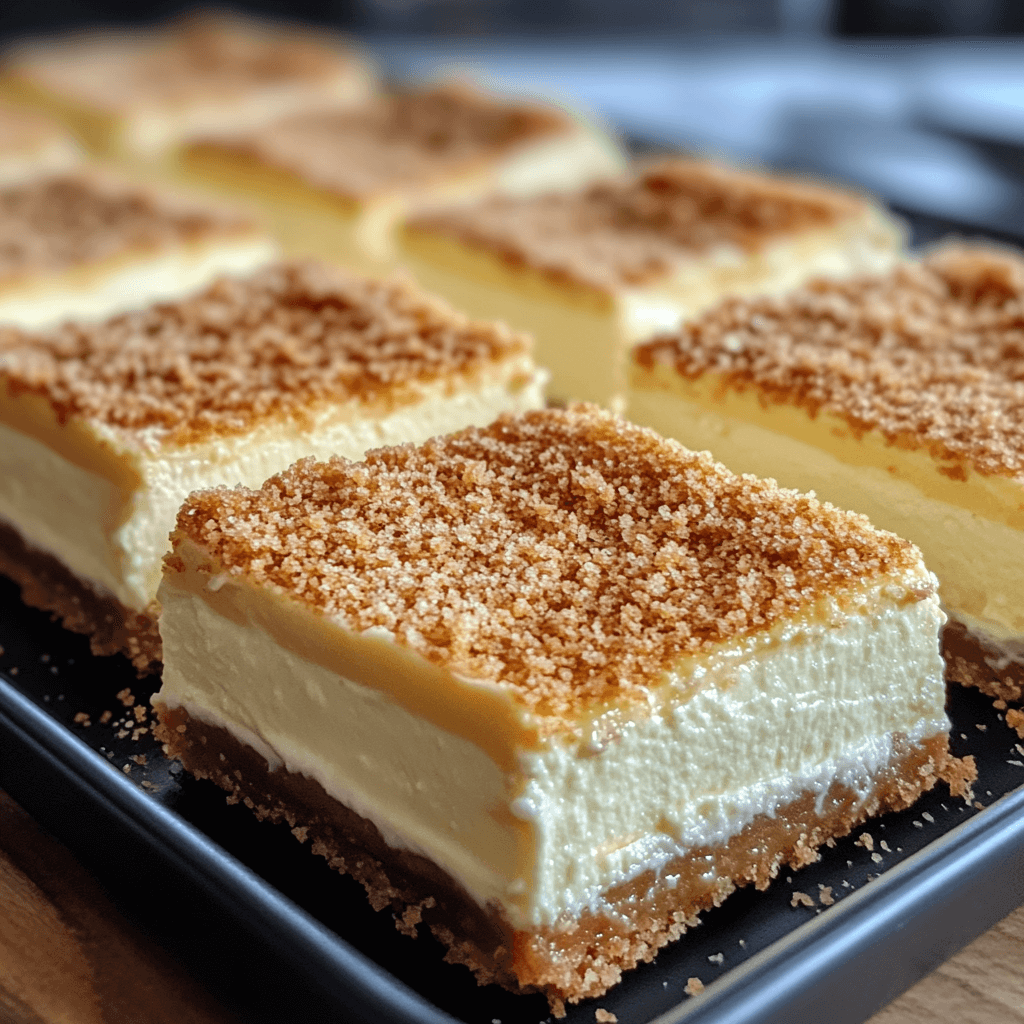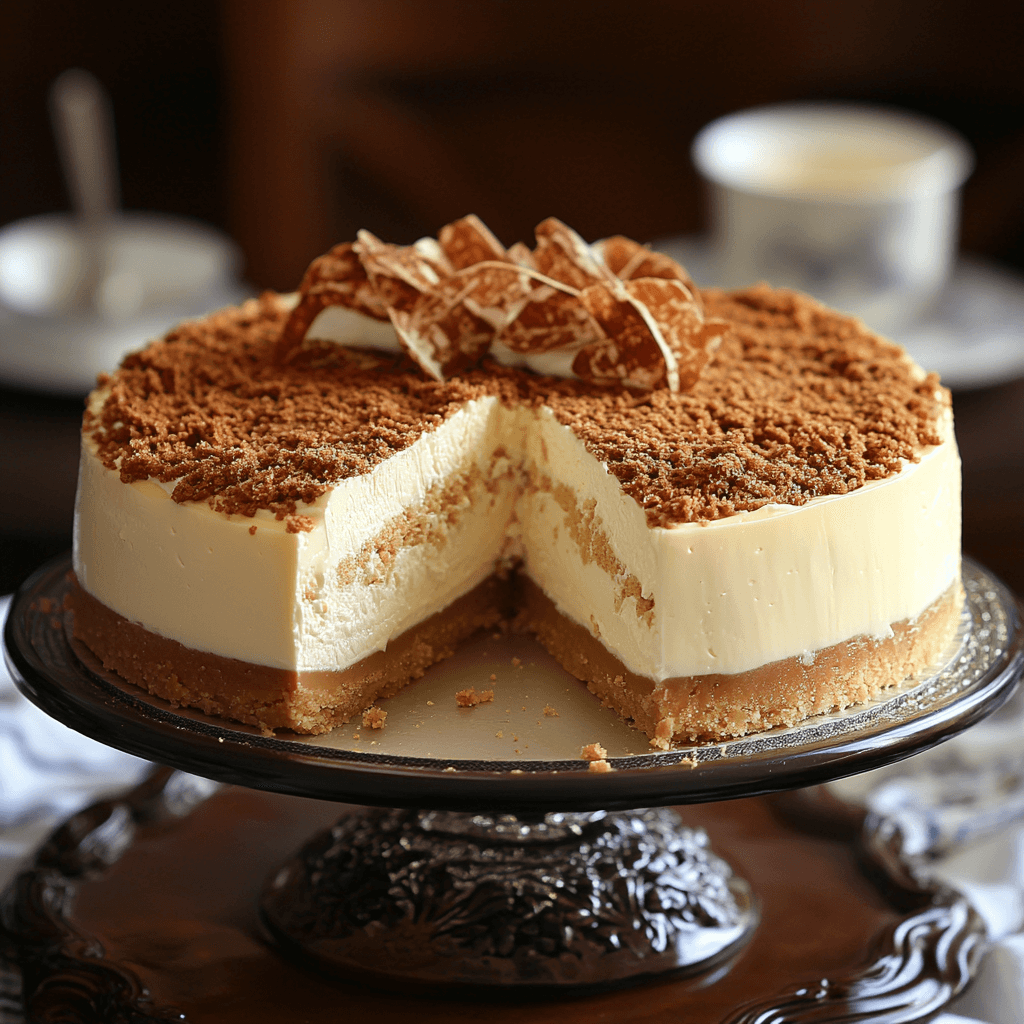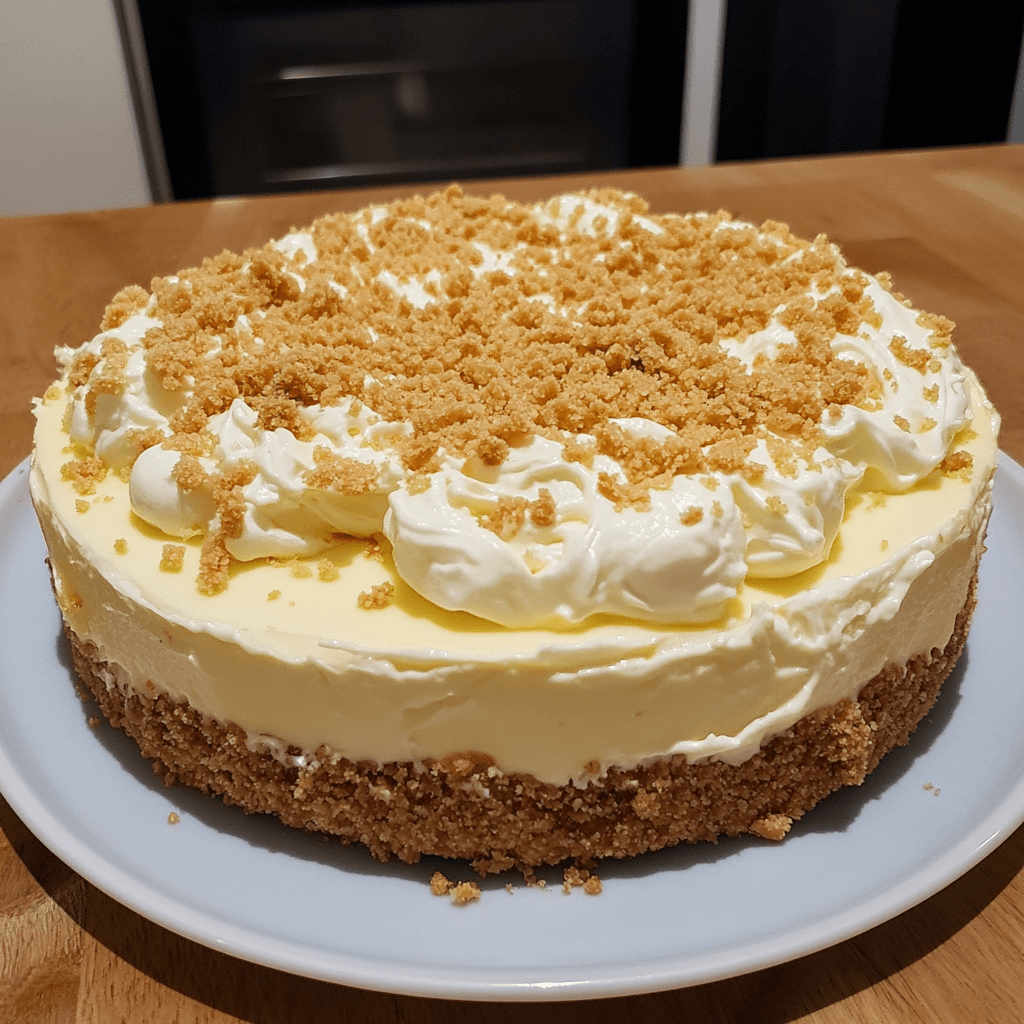Why You’ll Love This Condensed Milk Cheesecake ?
Cheesecake is a dessert that captivates everyone with its creamy, rich, and smooth texture. This Condensed Milk Cheesecake is an irresistible variation that combines the tangy flavor of cream cheese with the sweetness of condensed milk, creating a rich, velvety filling. The addition of sour cream ensures a smooth consistency and a slight tang, balancing out the sweetness. What sets this cheesecake apart is the simple preparation and delightful flavor that doesn’t require a lot of time or complicated techniques. Whether you’re an experienced baker or a beginner, this dessert is sure to impress your guests.
The graham cracker or digestive biscuit crust adds the perfect amount of crunch to each bite, complementing the creamy filling beautifully. The best part? This recipe is incredibly easy to make, and you don’t even need a water bath, which can sometimes be intimidating for those new to baking cheesecakes. It’s a simple yet impressive dessert that can be enjoyed on any occasion—whether it’s a holiday, birthday, or just because you want to treat yourself.
So, why not skip the store-bought cheesecake and make your own at home with this deliciously simple condensed milk cheesecake recipe?

What You’ll Need
For the Crust:
- 1 1/2 cups (150g) digestive biscuits or graham cracker crumbs: This forms the base of the cheesecake. The digestive biscuits or graham crackers give the crust a perfect crunch.
- 1/2 cup (115g) unsalted butter, melted: Butter helps to bind the crumbs together and adds a rich flavor to the crust.
- 2 tablespoons sugar (optional): If you like a sweeter crust, you can add sugar. Otherwise, the natural sweetness from the biscuits or graham crackers should suffice.
For the Cheesecake Filling:
- 16 oz (450g) cream cheese, softened: Cream cheese is the base of the cheesecake filling, providing that iconic smooth and creamy texture.
- 1 cup (240ml) sweetened condensed milk: This ingredient is what makes the cheesecake filling so luscious and sweet. It also helps to create the creamy consistency without needing much additional sugar.
- 1/2 cup (120ml) sour cream: Sour cream contributes a tangy flavor, balancing out the sweetness of the condensed milk and cream cheese, while adding extra creaminess to the filling.
- 3 large eggs: Eggs help set the cheesecake and provide structure. They also contribute to the smooth texture of the filling.
- 1 teaspoon vanilla extract: Vanilla brings depth and richness to the flavor of the cheesecake.
- 2 tablespoons lemon juice (optional): A touch of lemon juice can help cut through the richness and add a bright, fresh flavor to the cheesecake. This is optional but highly recommended if you enjoy citrus flavors.

Step-by-Step Instructions
Step 1: Prepare the Crust
- Crush the biscuits: Start by crushing the digestive biscuits or graham crackers into fine crumbs. You can do this using a food processor, or place the biscuits in a plastic bag and crush them with a rolling pin. The crumbs should be fine and evenly crushed to form a solid crust.
- Combine the crust ingredients: In a large bowl, mix the crushed crumbs, melted butter, and sugar (if using). Stir until the mixture resembles wet sand and all the crumbs are coated with butter.
- Press the crust into a pan: Grease a 9-inch (23 cm) springform pan with a bit of butter or cooking spray. Pour the crumb mixture into the pan, and use the back of a spoon or the bottom of a glass to firmly press the crumbs into the bottom to form a compact and even layer.
- Chill the crust: Place the crust in the refrigerator to chill while you prepare the filling. Chilling the crust helps it firm up and hold its shape when the cheesecake filling is added.
Step 2: Make the Cheesecake Filling
- Prepare the cream cheese: In a large mixing bowl, beat the softened cream cheese with an electric mixer on medium speed until it is smooth and creamy. This usually takes about 2-3 minutes. Make sure there are no lumps.
- Add the sweetened condensed milk: Pour in the sweetened condensed milk, and continue to mix until fully combined and smooth. The condensed milk will add both sweetness and richness to the filling.
- Incorporate the sour cream: Add the sour cream and vanilla extract, mixing until everything is fully incorporated. This will give your cheesecake a creamy texture and slight tanginess to balance the sweetness.
- Add the eggs: Crack the eggs one at a time into the mixture, beating well after each addition. Be sure not to overmix the eggs, as this could cause the filling to become too airy. Just mix until combined.
- Add lemon juice (optional): If you’re using lemon juice, add it now and mix it into the batter.
- Pour the filling into the prepared crust: Once the filling is smooth and well combined, pour it into the prepared crust, smoothing the top with a spatula.
Step 3: Bake the Cheesecake
- Preheat the oven: Preheat your oven to 325°F (165°C).
- Bake the cheesecake: Place the cheesecake in the oven and bake for 45-50 minutes, or until the edges are set but the center is still slightly jiggly. It’s important not to overbake the cheesecake, as it will continue to set as it cools.
- Cool the cheesecake: Once the cheesecake is done, turn off the oven and leave the cheesecake inside for an additional hour to cool gradually. This helps prevent cracks from forming on the top of the cheesecake.
- Chill the cheesecake: After an hour, remove the cheesecake from the oven and let it cool to room temperature. Once it has cooled, transfer it to the refrigerator to chill for at least 4 hours, or preferably overnight.
Tips for Success
- Use room temperature ingredients: Make sure your cream cheese and eggs are at room temperature before mixing. This helps create a smooth filling without lumps.
- Don’t overmix: While it’s important to mix the ingredients thoroughly, be careful not to overmix the eggs. Overmixing can cause air bubbles to form, which might result in cracks in the cheesecake.
- Prevent cracking: To prevent cracks from forming on top of your cheesecake, avoid opening the oven door too frequently during baking, and allow the cheesecake to cool gradually. A slow cooling process helps avoid rapid changes in temperature, which can lead to cracks.
- Baking time: Keep an eye on the cheesecake towards the end of the baking time. The center should still wobble slightly when you gently shake the pan. It will firm up as it cools.
- Chill thoroughly: Cheesecakes benefit from being chilled for several hours or even overnight. This helps set the filling and improves the flavor.

Variations to Try
- Fruit Topping: Add a layer of fresh fruit on top of your cheesecake for added flavor and color. Berries, such as strawberries, blueberries, and raspberries, are particularly delicious on a condensed milk cheesecake. You could also make a fruit compote to drizzle over the top.
- Chocolate Ganache: For a richer flavor, top your cheesecake with a layer of chocolate ganache. Simply heat heavy cream and pour it over chopped chocolate, stirring until smooth. Let it cool before spreading over the cheesecake.
- Nut Crust: Instead of using digestive biscuits or graham crackers, try making a crust with crushed nuts like pecans or almonds for a different texture and flavor.
- Caramel Sauce: Drizzle a warm homemade or store-bought caramel sauce over the top of your cheesecake for an indulgent twist. You could even swirl it into the cheesecake batter before baking.
Storing and Reheating
- Storing: Store your cheesecake in the refrigerator, covered with plastic wrap or in an airtight container, for up to 5 days. The cheesecake will stay fresh and delicious as long as it’s properly stored.
- Freezing: If you need to store the cheesecake for a longer period, you can freeze it. After it has cooled completely, cover it tightly with plastic wrap and aluminum foil, and freeze for up to 2-3 months. When you’re ready to eat it, thaw it overnight in the refrigerator.
- Reheating: Cheesecake is best enjoyed cold or at room temperature. To reheat individual slices, you can place them in the microwave for about 10-15 seconds, but keep in mind that the texture may change slightly.
Frequently Asked Questions
Can I make this cheesecake without a springform pan?
Yes, if you don’t have a springform pan, you can use a regular 9-inch round cake pan. Just be sure to line it with parchment paper to make it easier to remove the cheesecake later.
Why does my cheesecake have cracks?
Cracks can form if the cheesecake is overbaked or cooled too quickly. Be sure to monitor the baking time closely, and allow the cheesecake to cool gradually after baking. Avoid opening the oven door frequently during baking.
Can I use low-fat cream cheese for this recipe?
Yes, you can substitute low-fat cream cheese, but keep in mind that the texture and flavor may be slightly different. Full-fat cream cheese will give the cheesecake a richer and creamier taste.
The Final Word
This Condensed Milk Cheesecake is the perfect dessert for anyone who loves a rich, creamy, and easy-to-make cheesecake. Whether you’re a beginner or a seasoned baker, this recipe offers a simple way to enjoy a homemade cheesecake without too much fuss. The sweetened condensed milk adds the perfect level of sweetness and creaminess to the cheesecake filling, while the crunchy graham cracker or digestive biscuit crust is the ideal complement. Add a few toppings or variations to make it uniquely yours, and enjoy this indulgent treat any time!

